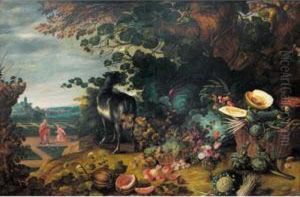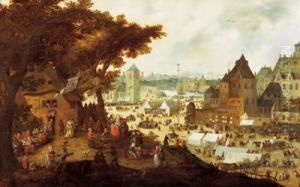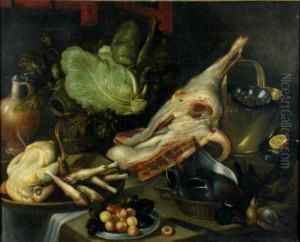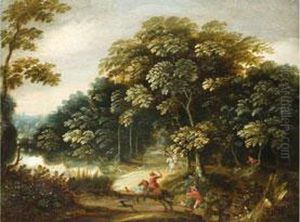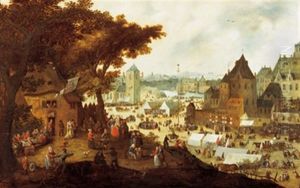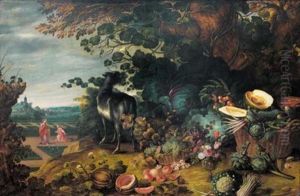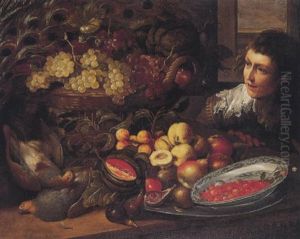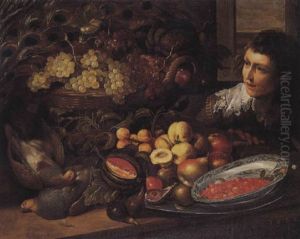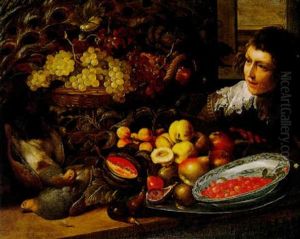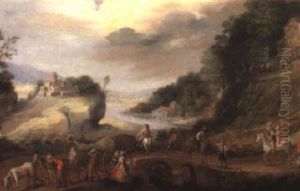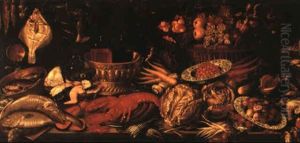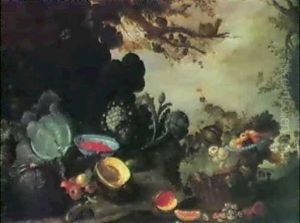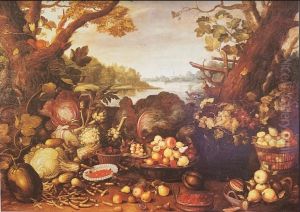Gommaert Van Der Gracht Paintings
Gommaert Van Der Gracht, born in 1600 and deceased in 1666, was a figure whose contributions to the arts are marked by their significance in the Dutch Golden Age, a period renowned for its remarkable output in paintings, literature, and architecture. While not as widely recognized as some of his contemporaries like Rembrandt or Vermeer, Van Der Gracht's work nonetheless embodies the era's artistic spirit and technical innovation. His life and career were deeply intertwined with the cultural and socio-economic fabric of 17th century Netherlands, a nation then at the zenith of its economic power and artistic influence.
Van Der Gracht's artistic journey was reflective of the period's fascination with realism, attention to detail, and an emerging interest in the scientific aspects of art, such as perspective and anatomy. Although specific details about his training are sparse, it is likely that he was apprenticed to a master artist, as was customary at the time, which would have provided him with a rigorous grounding in the technical and theoretical aspects of painting. His works, though not as prolifically preserved as those of some of his peers, suggest a keen interest in the everyday lives of people, landscapes, and possibly religious themes, which were prevalent subjects of the era.
Throughout his career, Van Der Gracht would have navigated the complex interplay of patronage from the Dutch elite and the burgeoning market for art among the burgeoning middle class. This period was characterized by a notable shift in art consumption, as the rising mercantile class sought to express their wealth, status, and intellectual interests through the acquisition of art. In this context, Van Der Gracht's work would have found audiences not only among the traditional aristocracy but also among a wider, more diverse clientele.
Despite the lack of a vast corpus of surviving works or detailed contemporary accounts of his life, Gommaert Van Der Gracht's contribution to the Dutch Golden Age of painting is undeniable. His artistry and technique reflect the period's intricate balance between the naturalistic representation of the physical world and a burgeoning exploration of individual expression and emotion. His death in 1666 marked the end of a career that, while perhaps not as celebrated as some of his contemporaries, contributed to the rich tapestry of 17th-century Dutch art. The legacy of artists like Van Der Gracht underscores the depth and diversity of talent that defined this golden era of artistic achievement.
